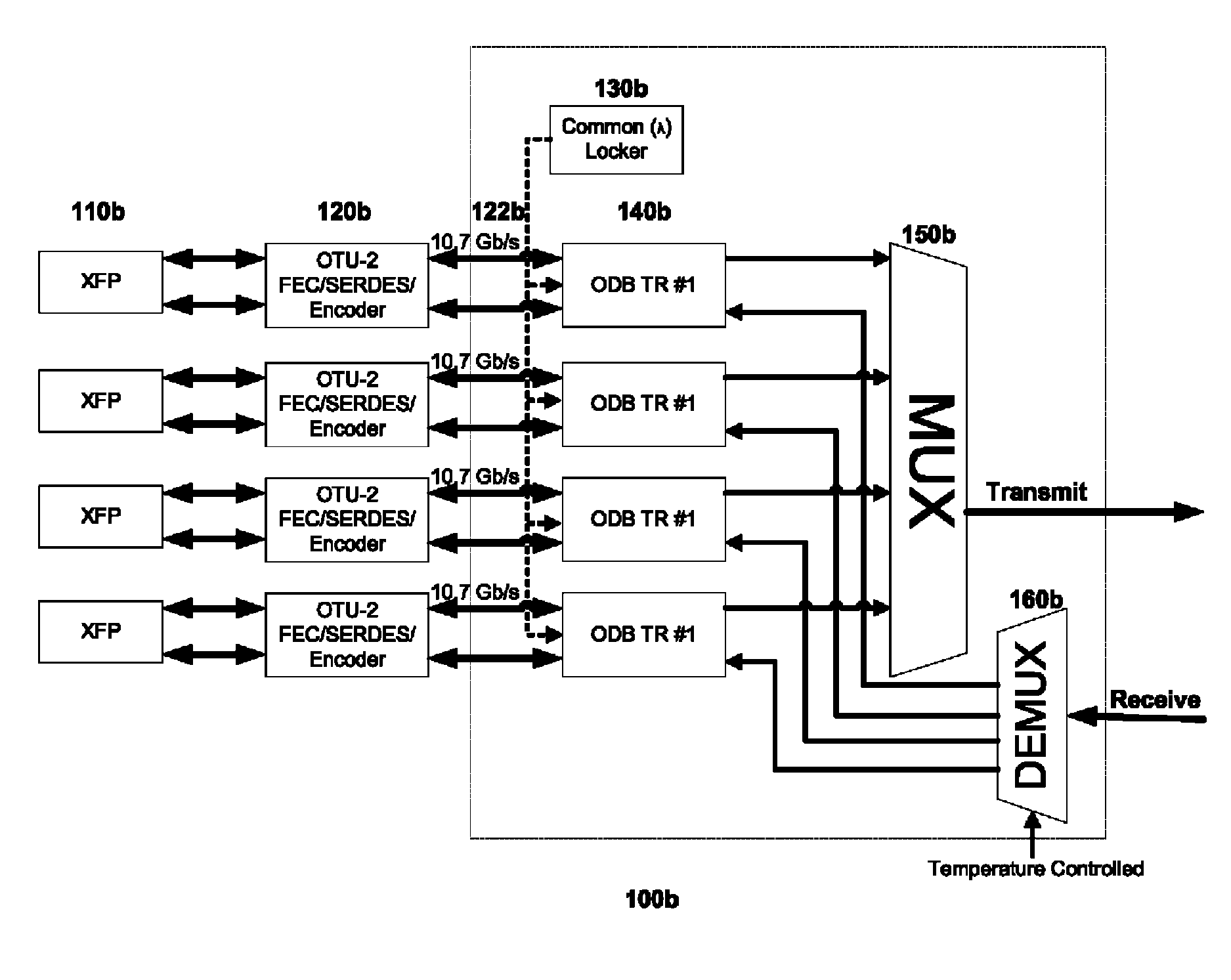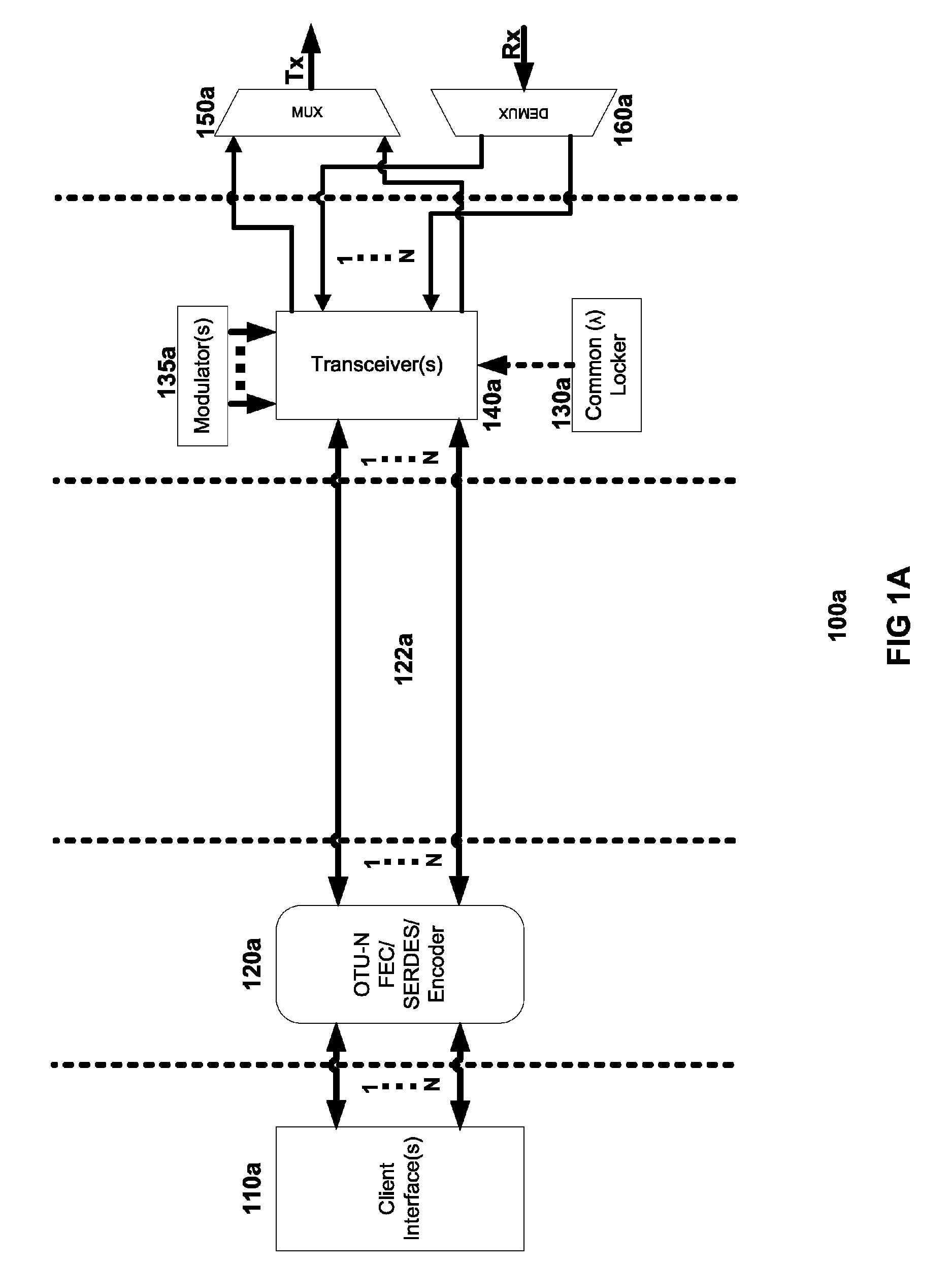Subchannel security at the optical layer
a security layer and optical layer technology, applied in the field of optical communications, can solve the problems of affecting the security of subchannels, so as to improve data/network security. the effect of enhancing the security of data
- Summary
- Abstract
- Description
- Claims
- Application Information
AI Technical Summary
Benefits of technology
Problems solved by technology
Method used
Image
Examples
Embodiment Construction
A. Alternating Scrambling / Descrambling Schemes
[0040]Turning to FIG. 2, subchannel muxponder 200 represents a modified embodiment of subchannel muxponder 100a of FIG. 1A, with the addition of G.709 / 975 Scrambler / Descrambler 250. As noted above, each client signal may be transmitted via any of various standard data protocols, such as Ethernet, SONET, Fibre Channel, etc. The digital processing of such client signals by FEC-SERDES block 120a of FIG. 1A involves a process of encoding each client signal into a standard frame structure for the transport of services over optical wavelengths in WDM systems. Different standard implementations of such frame structures include the G.709 and G.975 recommendations of the International Telecommunications Union (ITU-T).
[0041]In the embodiment illustrated in FIG. 2, G.709 / 975 Scrambler / Descrambler 250 causes the digital processing of client signals to alternate over time between using the G.709 standard and the G.975 standard. For example, in one em...
PUM
 Login to View More
Login to View More Abstract
Description
Claims
Application Information
 Login to View More
Login to View More - R&D
- Intellectual Property
- Life Sciences
- Materials
- Tech Scout
- Unparalleled Data Quality
- Higher Quality Content
- 60% Fewer Hallucinations
Browse by: Latest US Patents, China's latest patents, Technical Efficacy Thesaurus, Application Domain, Technology Topic, Popular Technical Reports.
© 2025 PatSnap. All rights reserved.Legal|Privacy policy|Modern Slavery Act Transparency Statement|Sitemap|About US| Contact US: help@patsnap.com



